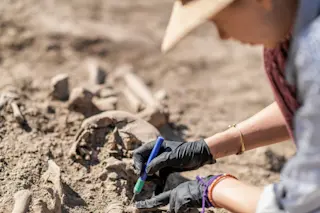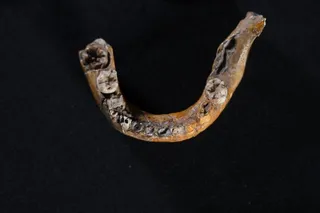Most settings in everyday life seem ordinary — your house, the office, a local restaurant you frequent after work. You never truly know, though, the entire history that surrounds the environments you visit. Archaeological rarities occasionally hide in the soil beneath these places, even popping up in people’s backyards.
Many of these artifacts strewn across the world are at risk of being lost to time, but there is a way they can be saved. Construction, climate change, and conflicts summon archaeologists to swiftly preserve cultural heritage in a practice called “rescue archaeology.”
What Is Rescue Archaeology?
The term “rescue archaeology” goes by several other labels: salvage archaeology, preventive archaeology, and others. It involves an excavation done before the start of construction in an area that contains significant cultural resources. This kind of archaeology calls for immediate action, unlike the deliberate pace of traditional, research-oriented excavations.
What Caused Rescue Archaeology to Start in the U.S.?
Rescue archaeology has been intertwined with the growth of infrastructure for decades. As industrialization prospered in the late 19th and early 20th centuries, the need to protect cultural sites became glaringly apparent. Initial legislation — the Antiquities Act of 1906 and the Historic Sites Act of 1935 — laid the foundation for cultural preservation.
Further measures became necessary due to an upsurge in development projects after World War II, such as the installation of the U.S. Interstate Highway System in the 1950s. Congress addressed this issue by passing the National Historic Preservation Act of 1966. This legislation set a robust preservation policy in place; The linchpin of the act is Section 106, requiring federal agencies to consider the potential impact of projects on historic properties.
Read More: 6 Famous Archaeologists You Need to Know About
When Does Rescue Archaeology Occur?
Before a project can begin on public land, archaeologists must complete a survey to see if any cultural resources will be impacted. If so, the agency or company can redirect the project, especially if it relates to cell phone towers, pipelines, or roads. When this option isn’t possible, archaeologists must quickly excavate and preserve the site as much as possible before construction begins.
Unearthing History: Private Property Discoveries
When a person stumbles upon an artifact on private property, the process unfolds differently. Mark Doperalski, state Archaeologist with the New Hampshire Division of Historical Resources, receives weekly messages from residents who believe they’ve unearthed a remarkable relic.
Most times, these items don’t exactly qualify as significant artifacts. However, some residents come across a legitimate archaeological find while working on a house project, which is when Doperalski gets involved. A notable example is when a homeowner wanted to put in a septic system and accidentally found a 9,000-year to 12,000-year-old Paleoindian site.
Homeowners' Rights and Responsibilities in Archaeological Finds
The fate of most finds on private property lies in the hands of the homeowner. Without the presence of permits, laws, or federal funding in this type of situation, the homeowner can simply proceed with construction if they want.
Or they can move the information forward to archaeologists who will recover the artifacts. Homeowners may give a firm deadline for an excavation so they can continue their project, but Doperalski says most of them will be more lenient because they are interested in archaeology or history. They can even keep any artifacts, with the exception of human remains or grave goods, which are handled using special protocol.
What Else Harms Archaeological Sites and Artifacts?
Although rescue archaeology mostly refers to sites impacted by construction, there are other factors that endanger them. The term often used to define protection of these sites is ‘risk management for cultural heritage.’
Looting and Vandalism
Looting and vandalism disrupts a site, especially when an artifact is stripped from its original archaeological context. Intentions behind looting aren’t always malicious; When avid fans of metal detecting dig up artifacts, they unknowingly ruin a site.
Natural Disasters
Natural disasters also wreak havoc on sites. Extreme weather events such as hurricanes, wildfires, earthquakes, and flooding all have the potential to inflict damage.
Warfare
War has destroyed countless landmarks around the world, even though most countries have pledged to take action by ratifying the Hague Convention for the Protection of Cultural Property in the Event of Armed Conflict.
Read More: 5 American Anthropologists You Should Know
Why Is Rescue Archaeology Important?
Since its emergence, rescue archaeology has been rooted in enriching public knowledge of history. Doperalski takes part in this effort through his work in the New Hampshire State Conservation and Rescue Archaeology Program (SCRAP).
New Hampshire State Conservation and Rescue Archaeology Program
New Hampshire SCRAP provides opportunities for amateur archaeologists to gain hands-on experience. Many activities are held in state parks, where curious visitors are invited to learn about the conservation process.
After a dig in one of the parks, artifacts are displayed alongside interpretive signage to expose visitors to the history of the land. The purpose of this, Doperalski says, is to make archaeological information accessible rather than keeping artifacts stored away in boxes.
“It gives you that sense of place, and honestly, I think it enriches their stay and their experience,” Doperalski says. “But if nothing else, hopefully they have this connection to the past … I think if you can get people to connect with the past, that’s when you get them to respect and then want to protect the past.”
What Is the Future of Rescue Archaeology?
In an increasingly digital landscape, archaeologists now wield revolutionary tools to preserve sites and enhance the public’s understanding of cultural heritage.
The Impact of Digital Technology in Archaeology
Technological advancements such as satellite imagery and lidar scanners — frequently used to capture images in the Access 3D Lab — bypass limitations of traditional, onsite methods. Drones, for instance, have allowed archaeologists to reach inaccessible sites and examine them from new angles.
Laura Harrison, an archaeologist and the Founding Director of the Access 3D Lab at the University of South Florida, says that a physical excavation will always be a core component of rescue archaeology, but digital technology can act as a perfect complement. By creating 3D visualizations of at-risk sites, multiple sets of data and measurements can be brought together into one convenient product, avoiding the separation that occurs in archaeological storage.
Overcoming Barriers in Rescue Archaeology
A few barriers prevent this technology from being more widespread in archaeology. The two most apparent concerns, Harrison says, are cost and expertise. Lidar equipment can soar to a five or six figure cost, and a steep learning curve in 3D modeling makes it difficult for some archaeologists to grasp the technology.Despite these challenges, new technology has emerged as a crucial way to share archaeological information.
With extensive technological arsenals and more people becoming passionate about the history around them, rescue archaeology has a bright future ahead of it — all the more important considering the ever-growing importance of protecting both global and local landmarks in this changing world.















